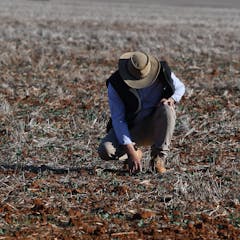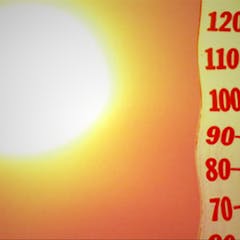
Articles on Extreme heat
Displaying 1 - 20 of 91 articles

Global climates are changing and the world is rapidly warming. Canada’s labour laws must keep pace with the rate of change to protect workers.

African cities with over 10 million residents are getting hotter fast. Millions face disaster in these urban heat islands unless the cities start greening and adapting to climate change soon.

Recent flash droughts in parts of NSW and Victoria appeared quickly and can be followed by intense flooding rains. It’s part of a global trend driven by global warming.

Ghana is experiencing record high temperatures and rainfall patterns have become inconsistent.

Cancellations of Australian music festivals, such as the abrupt end to Pitch Music Festival due to extreme heat, have become all too familiar.

Climate change is increasing the risks of extreme heat, floods and bushfires, meaning more people are having to consider moving home. But different people come to different decisions.

During pregnancy, the body’s capacity to regulate temperature changes. Here’s how to cool down and the overheating red flags to watch out for.

Most of the 1 billion people in informal settlements are in the tropics where the threat of humid heat is rising. Poor weather station coverage that misses local hotspots puts them even more at risk.

An atmospheric scientist explains how rising temperatures are helping to fuel extreme storms, floods, droughts and devastating wildfires.

The US saw a record number of billion-dollar disasters in 2023, even when accounting for inflation. The number of long-running heat waves like the Southwest experienced is also rising.

Koalas will need our help more than ever this summer as hot, dry conditions force them to seek water. Here’s how to help keep them safe and what to do if you encounter a koala in distress.

Hot temperatures seem to lead to aggression, both in real life and online.

The pilot project opening in Sydney will use the best available evidence to keep vulnerable people cool on the hottest of days.

Looking after a baby during extreme heat events takes a little planning and a lot of patience. Here are some practical steps you can take.

Heat illnesses can vary, from relatively mild heat exhaustion to the potentially life-threatening condition of heat stroke. Here’s how to tell the difference.

Australia is planning for a very hot summer, which will have far-reaching consequences for many people. It’s time governments took this more seriously and, importantly, took action.

One fan died and others reported burns at the Swift concert. And we’re going to see similar incidents at future concerns if we don’t start planning for extreme weather.

More Australians than ever live in rented homes, many of which get far too hot. With summers getting longer and hotter, keeping millions of people cool should be a national housing policy priority.

From dark dragonflies becoming paler to plants flowering earlier, some species are slowly evolving with the climate. Evolutionary biologists explain why few will evolve fast enough.

As Australia heads into summer with an El Niño, it’s important understand and prepare for the health risks associated with extreme weather.
